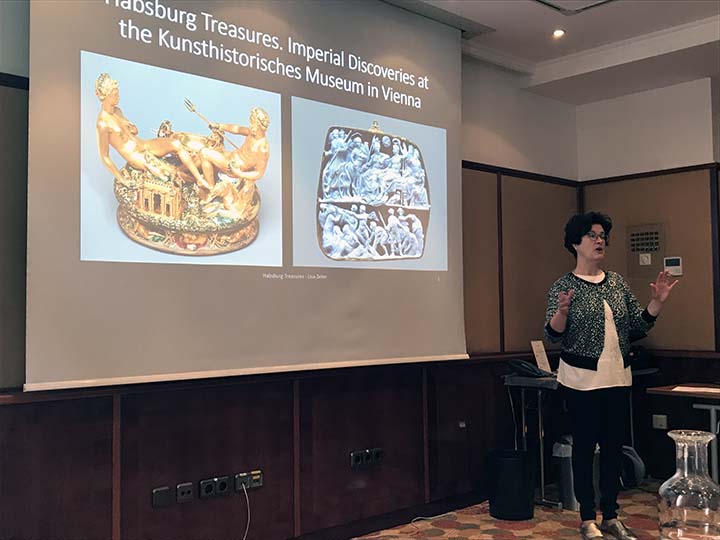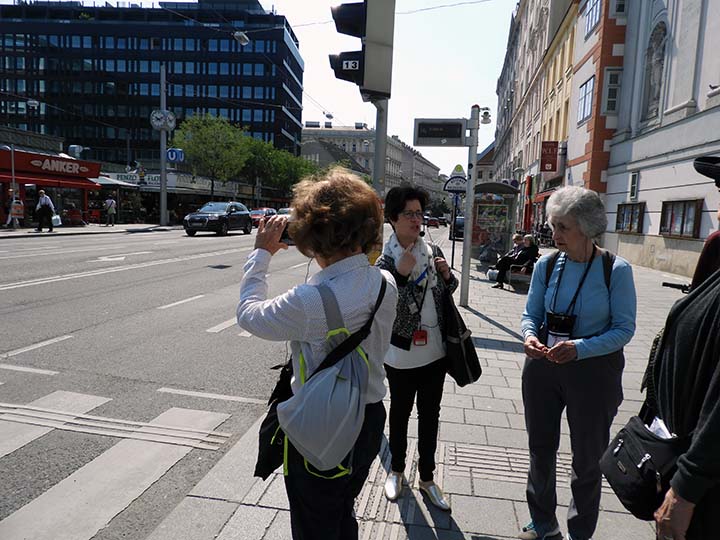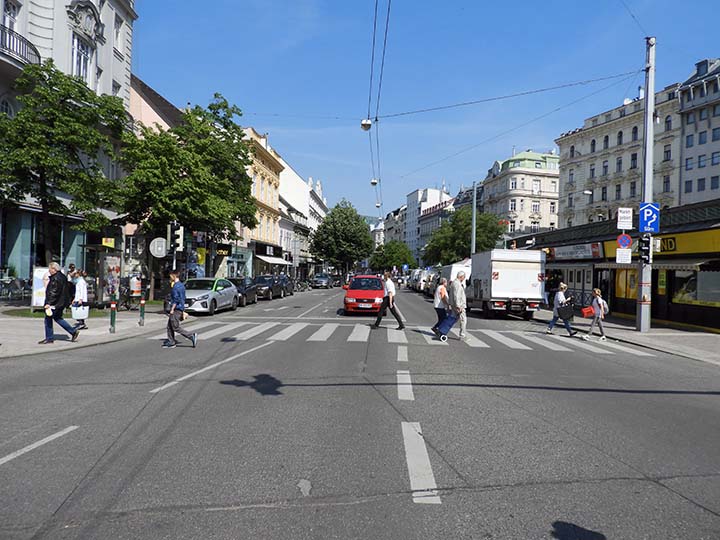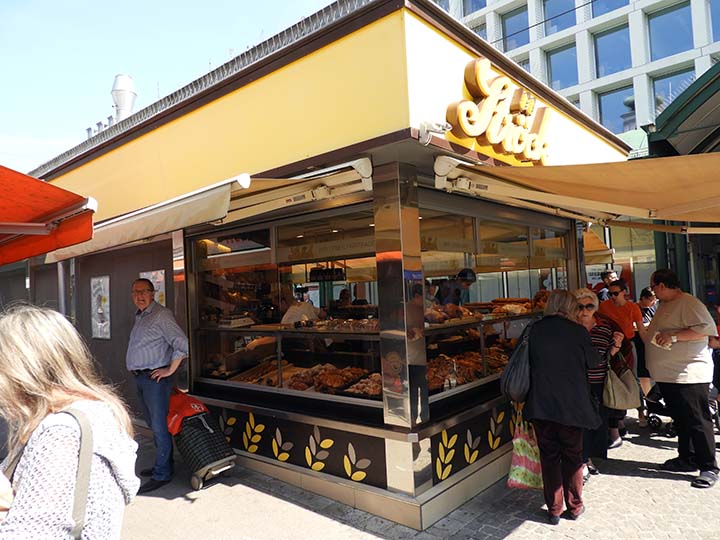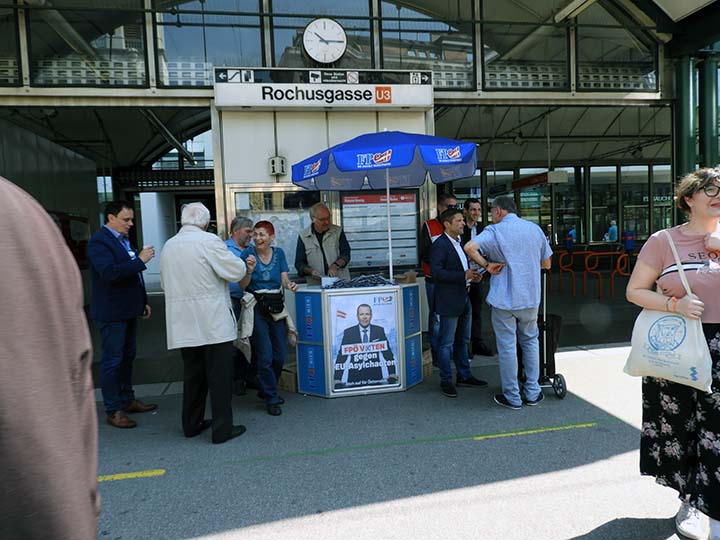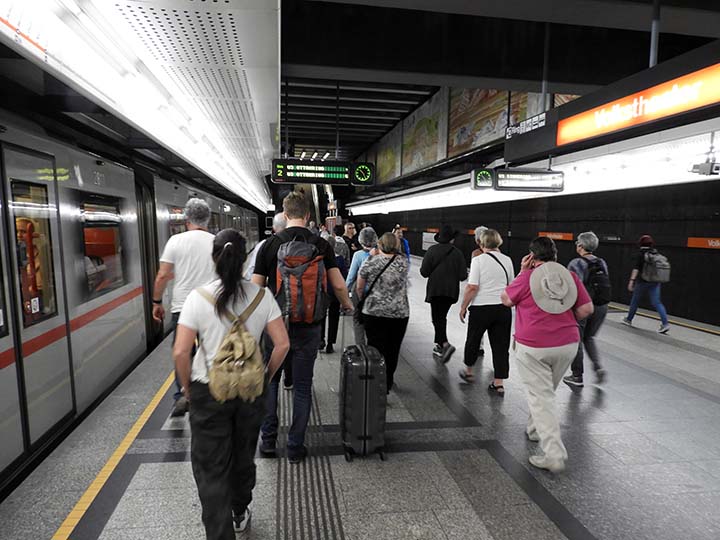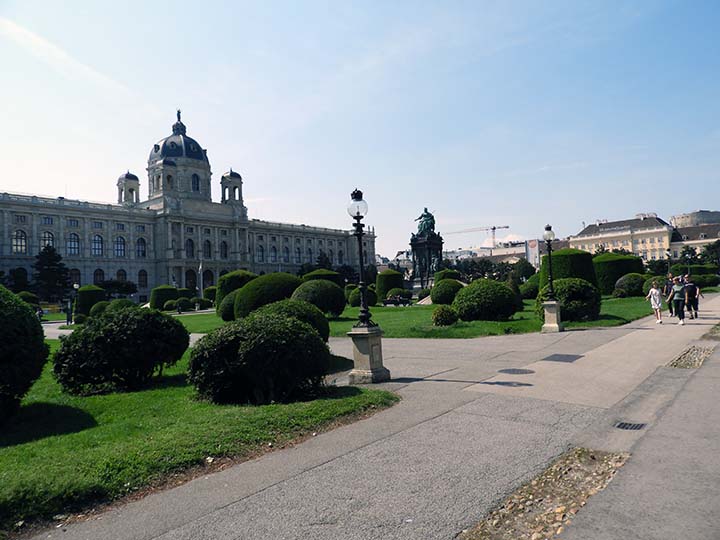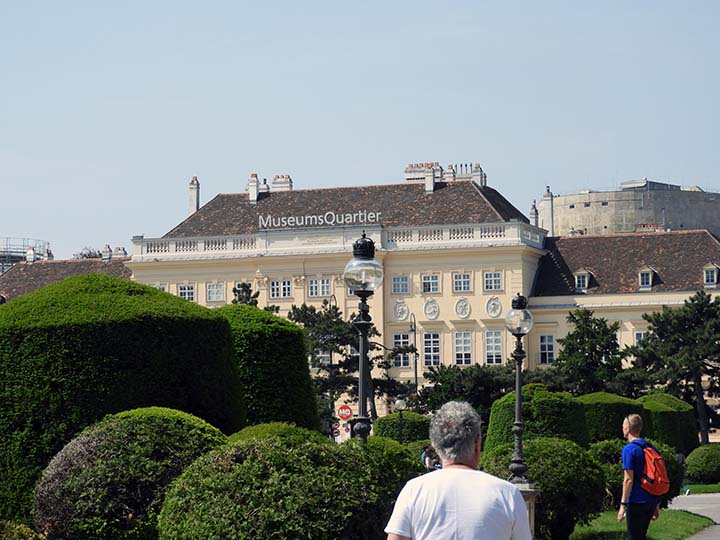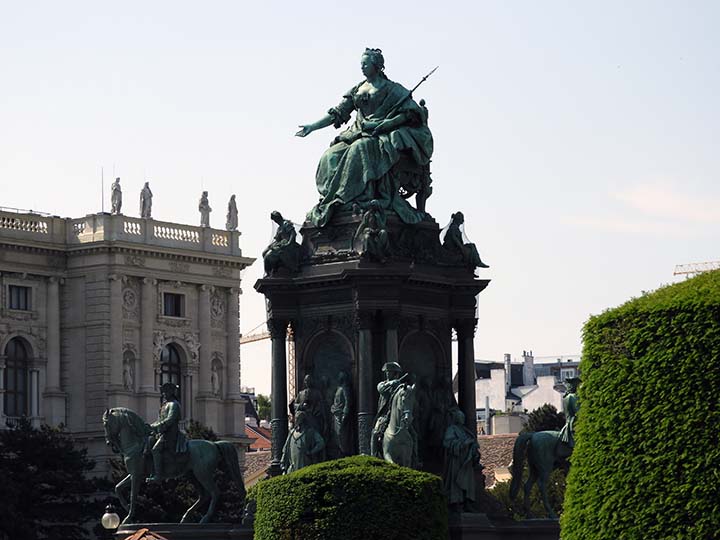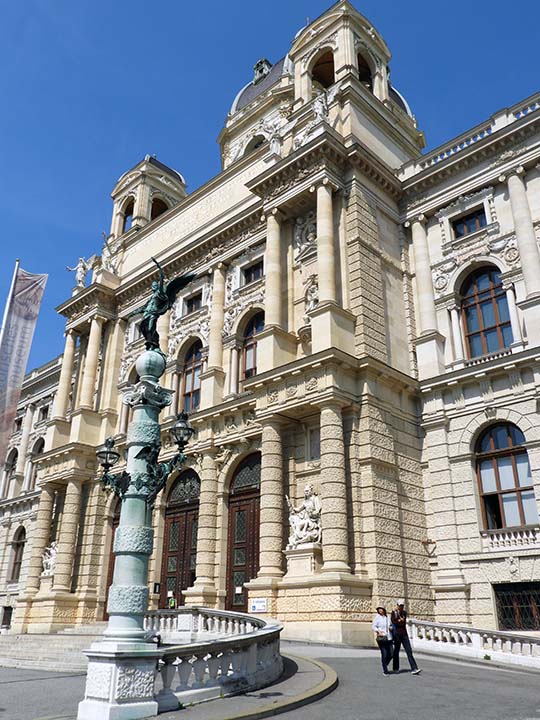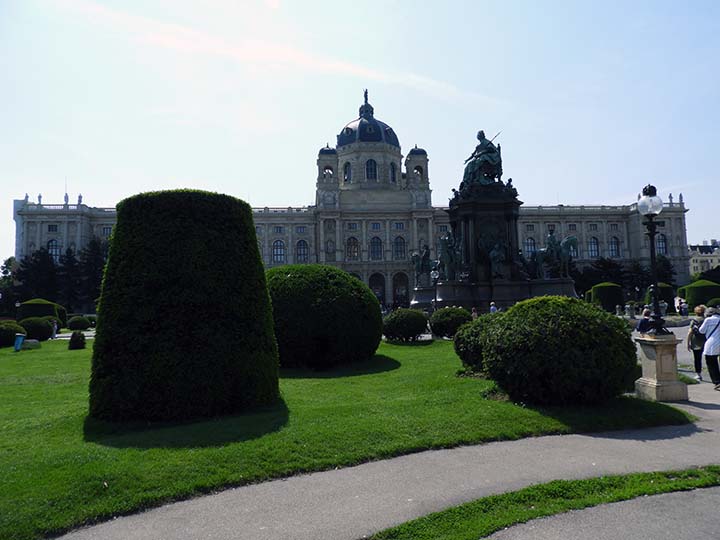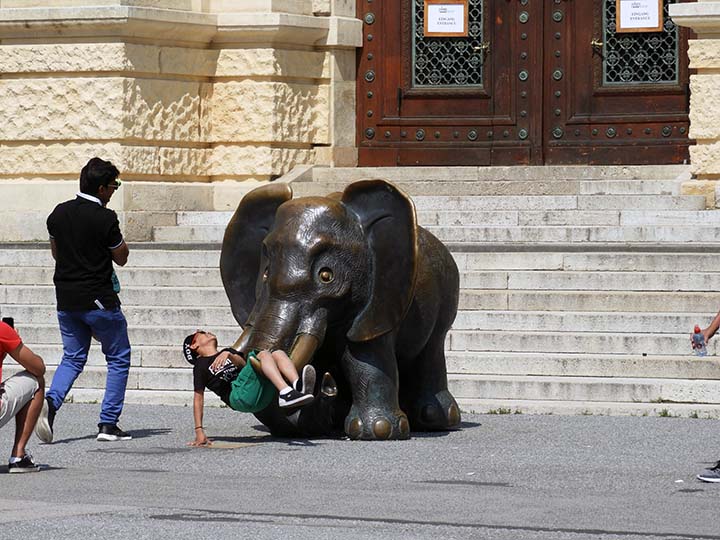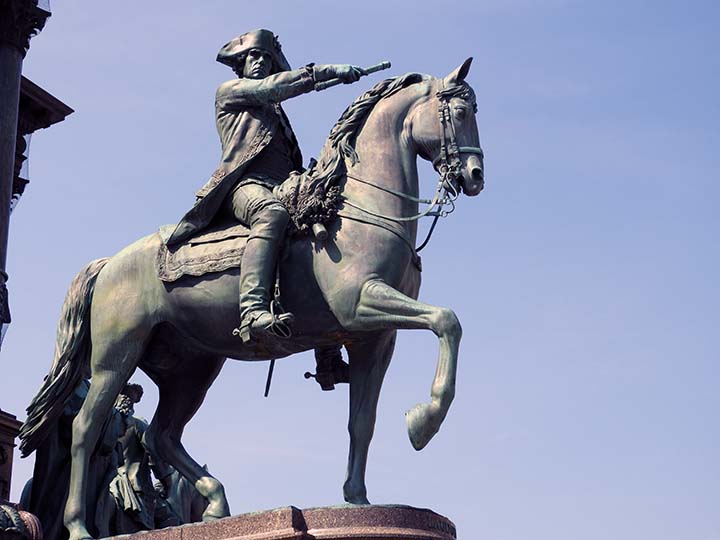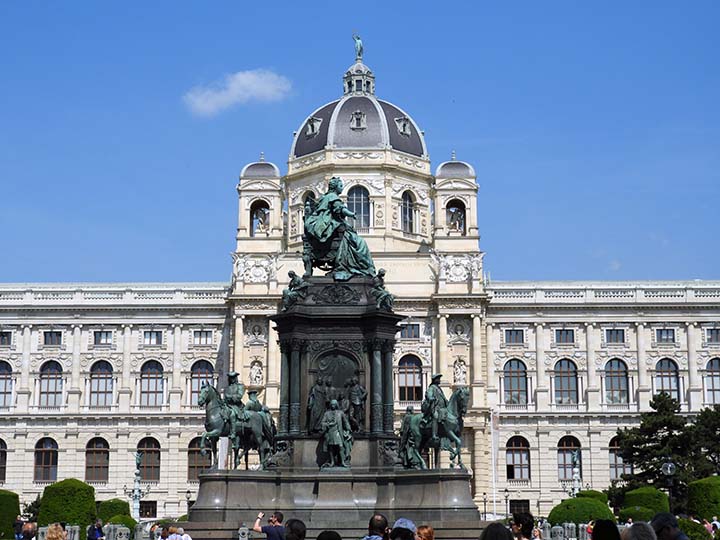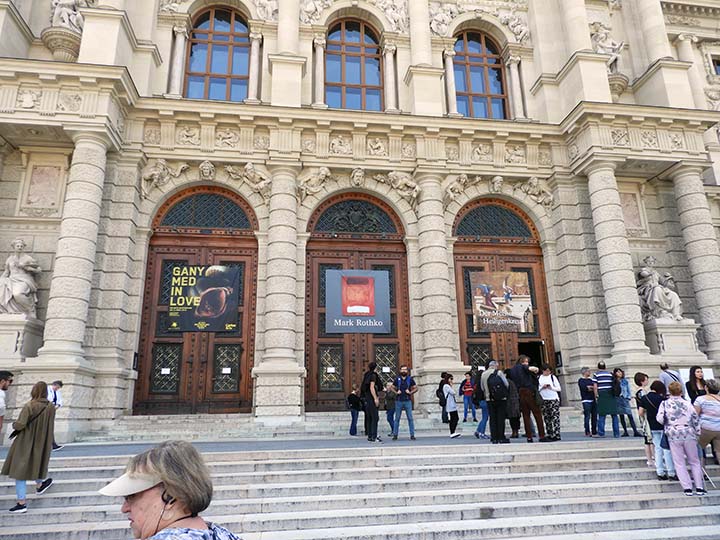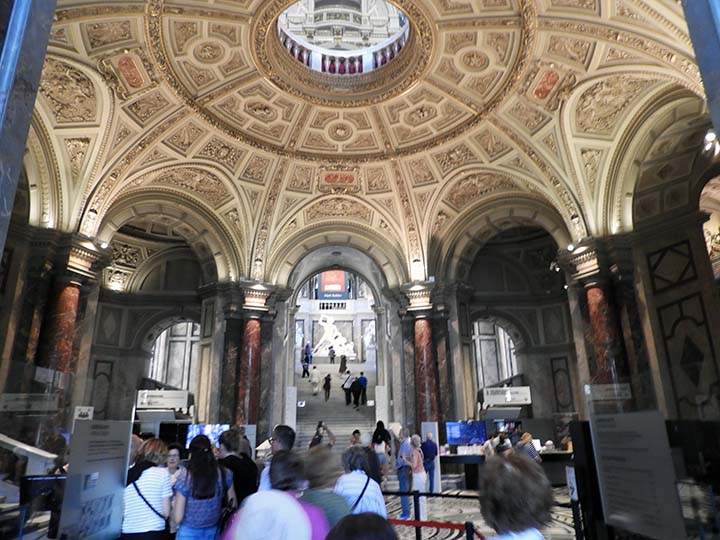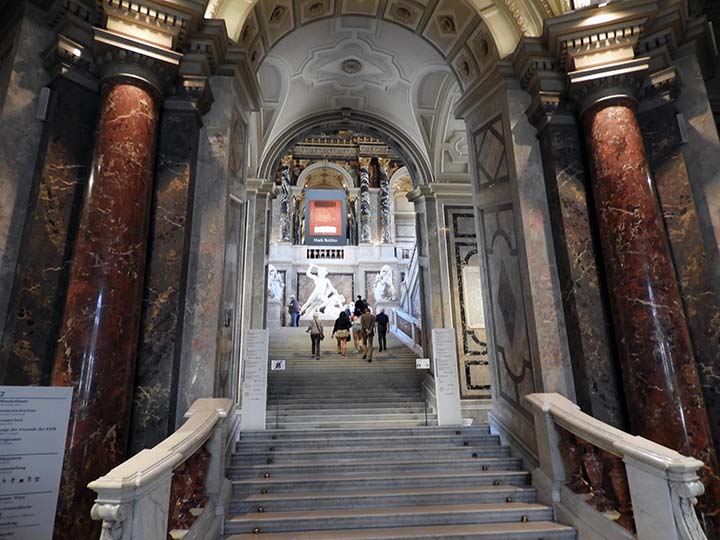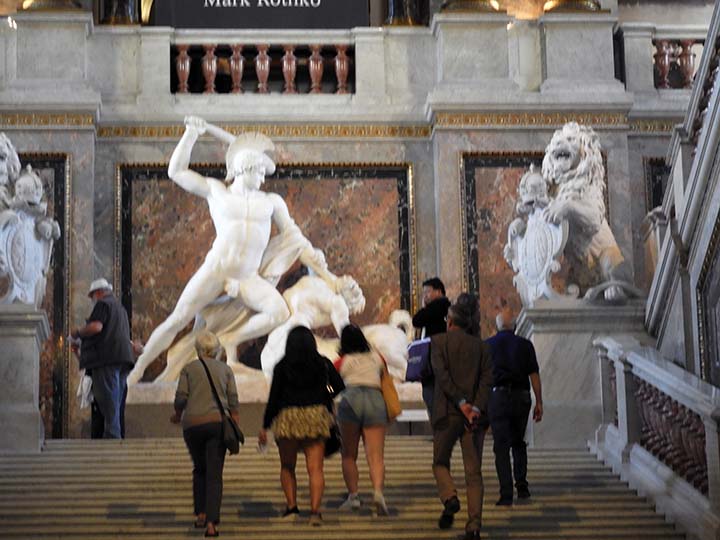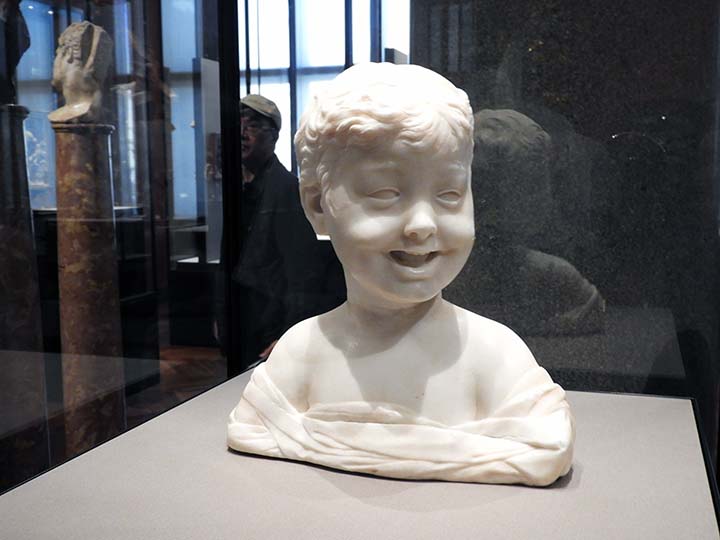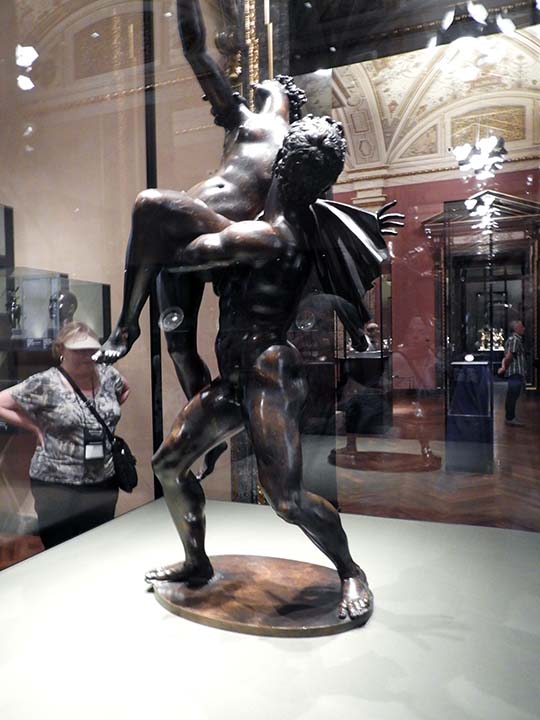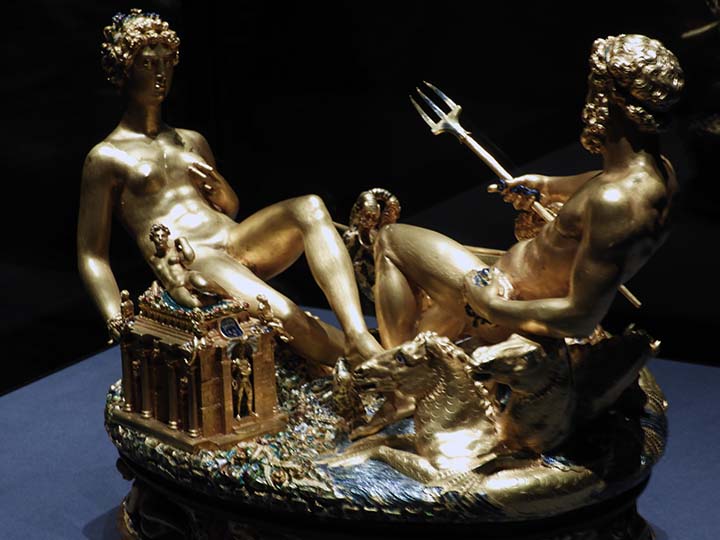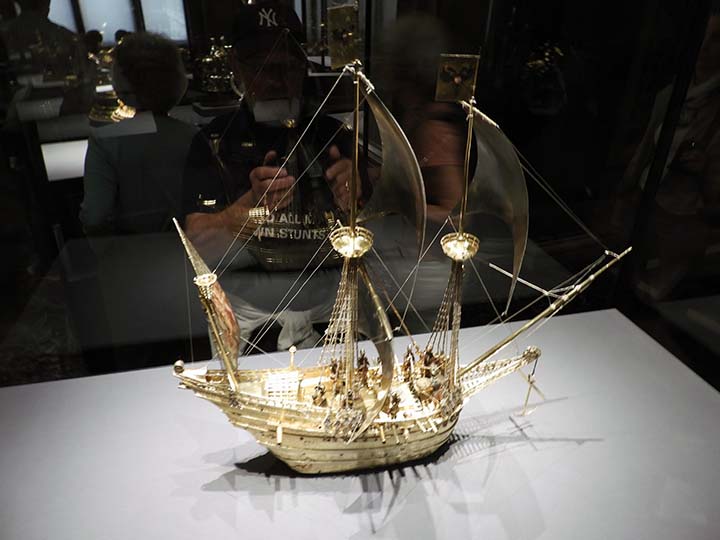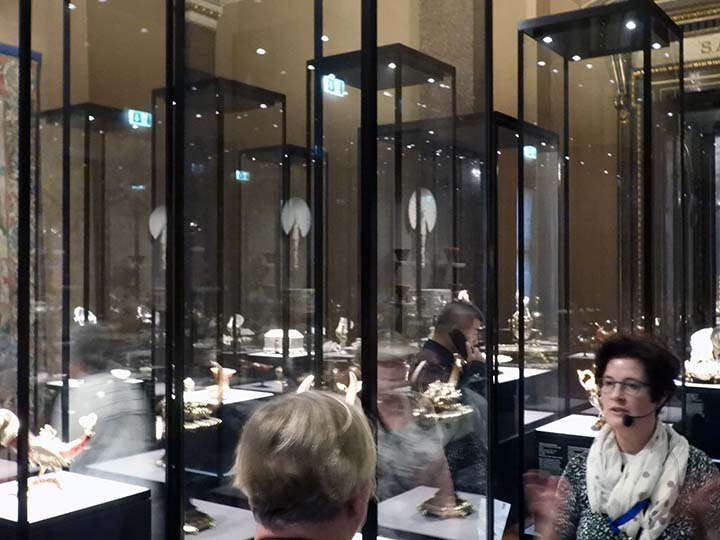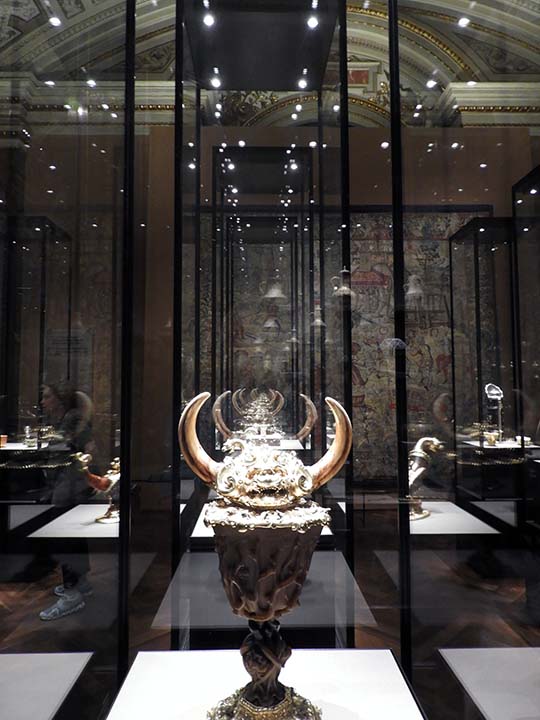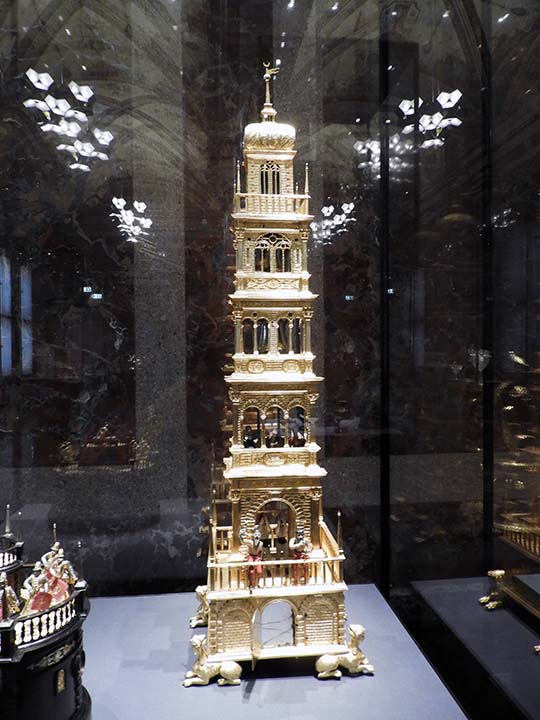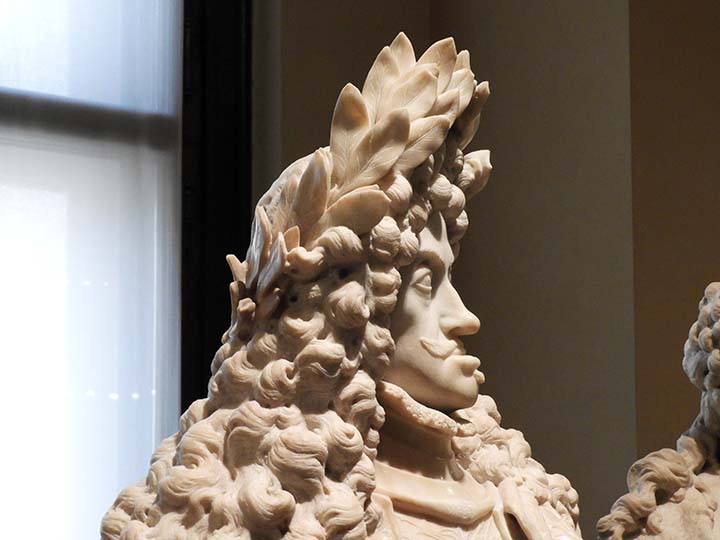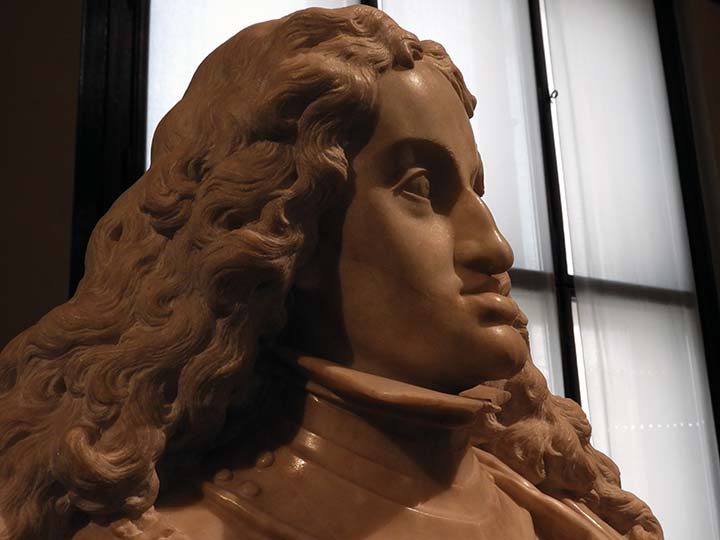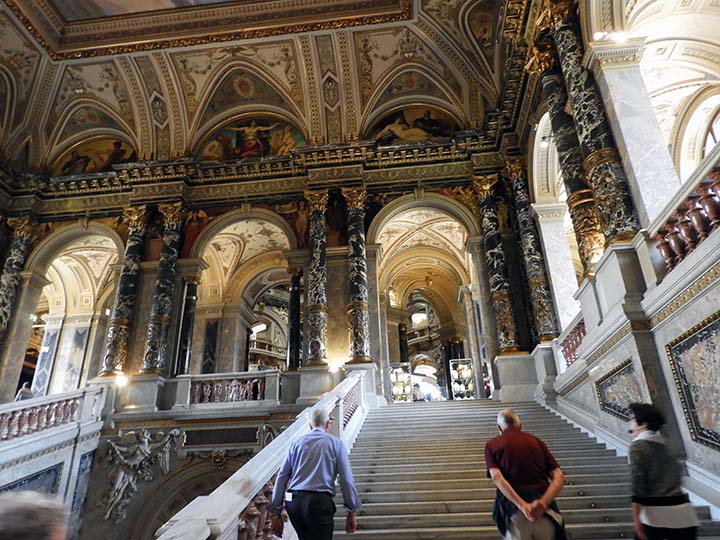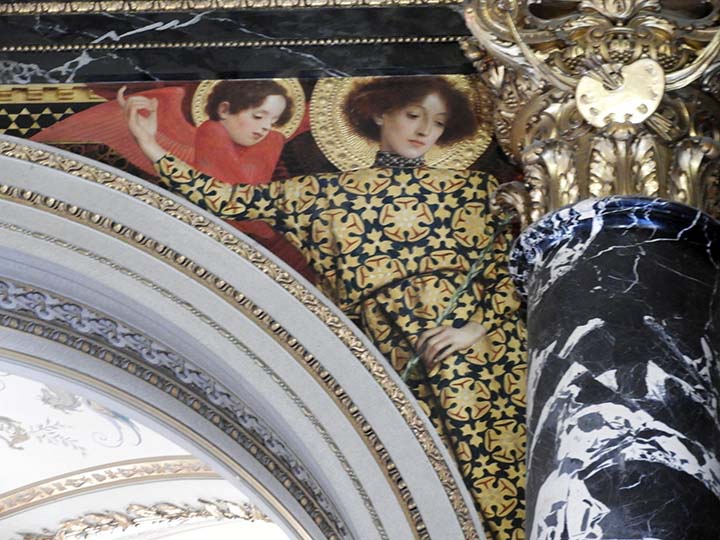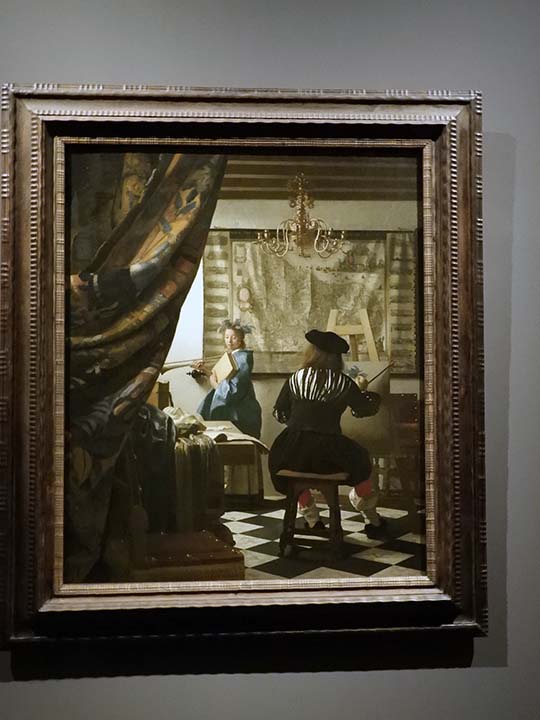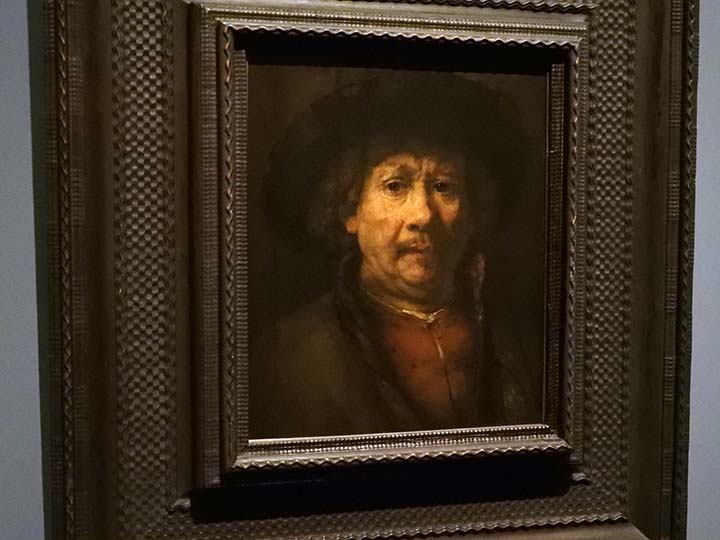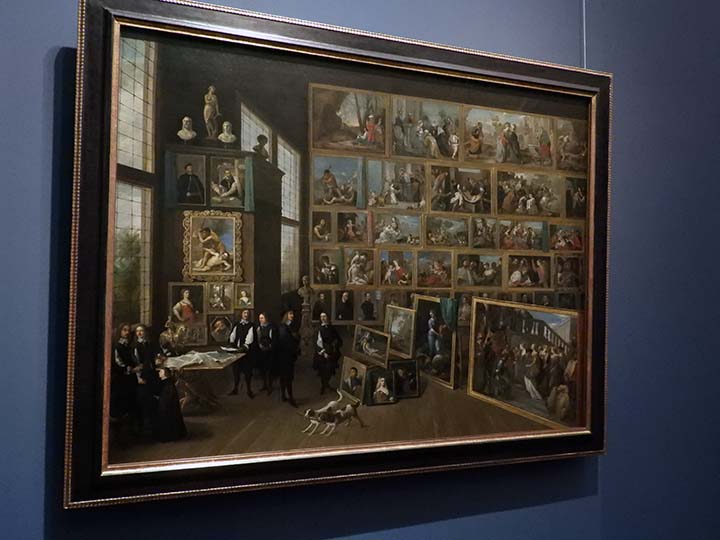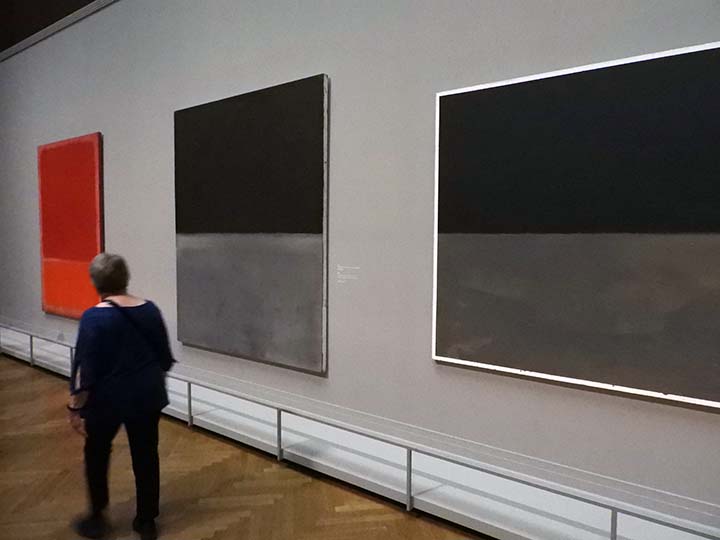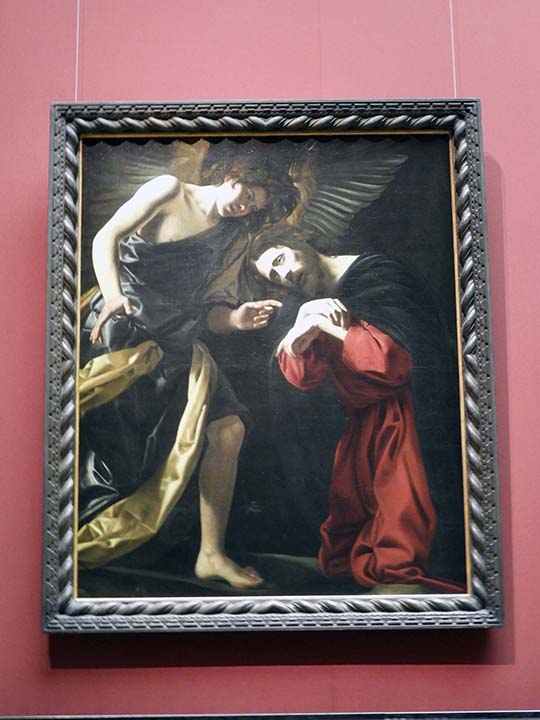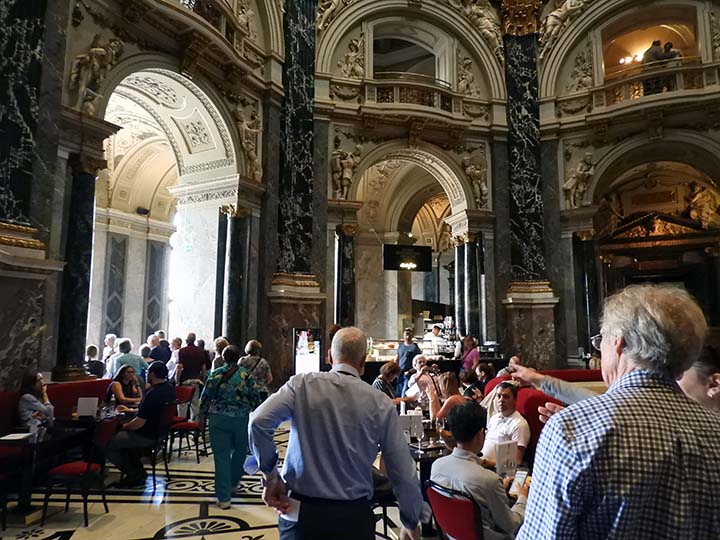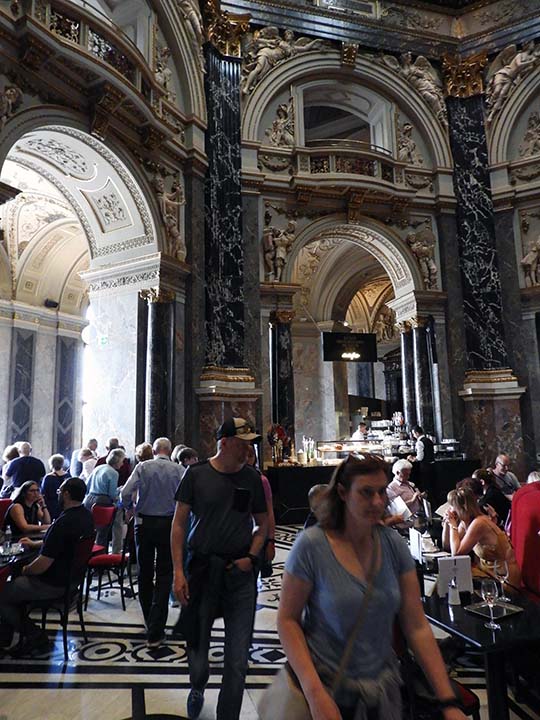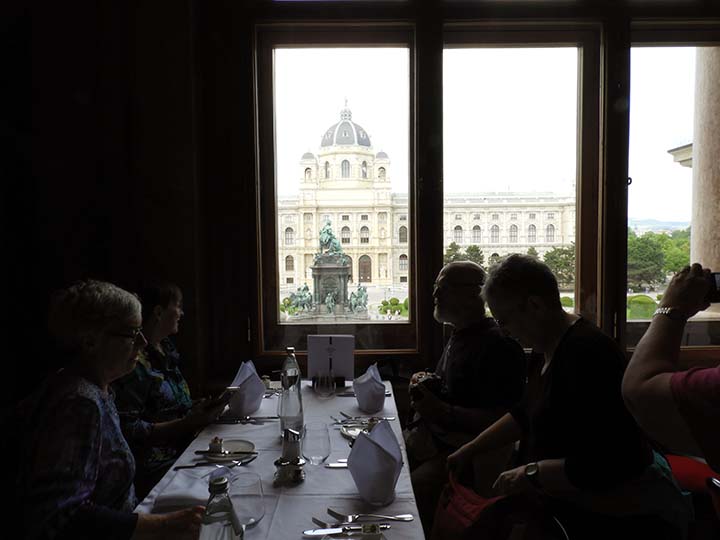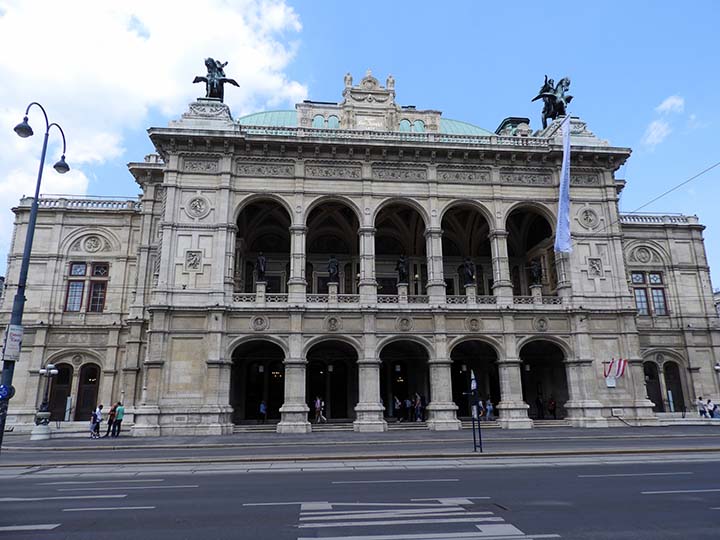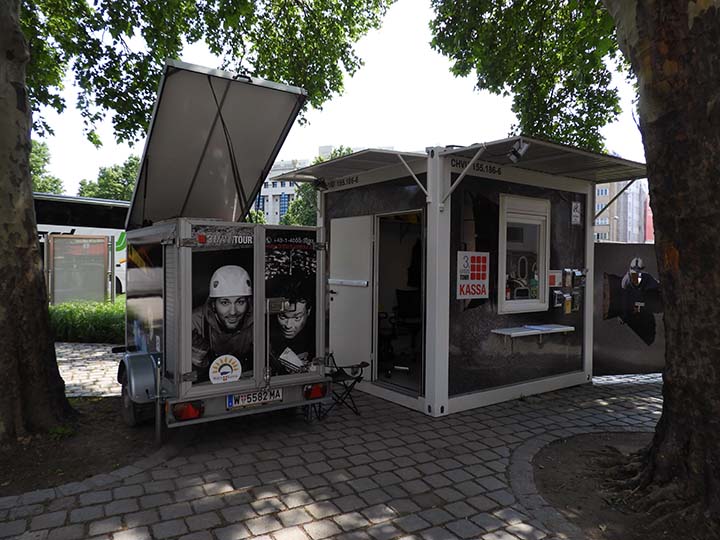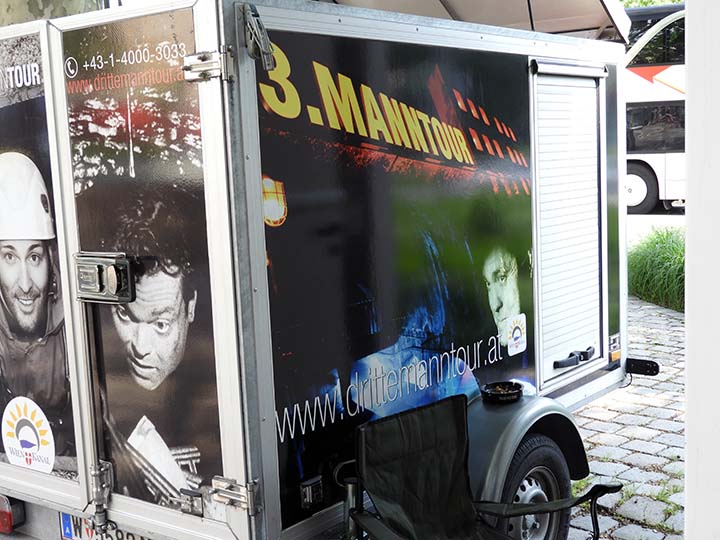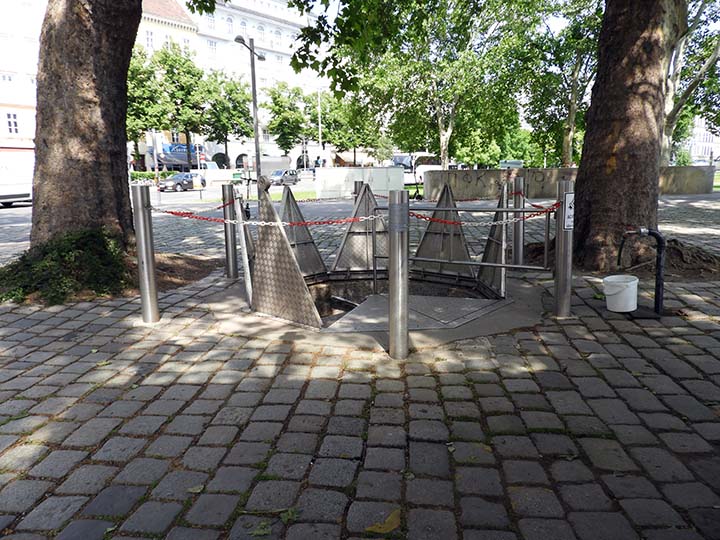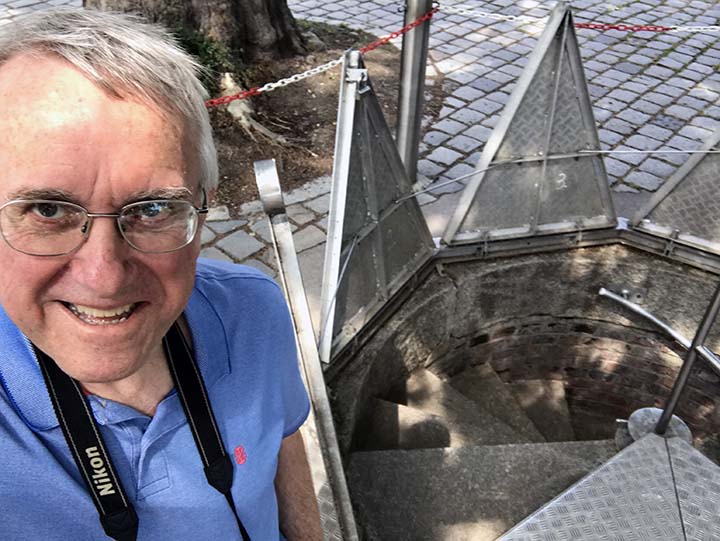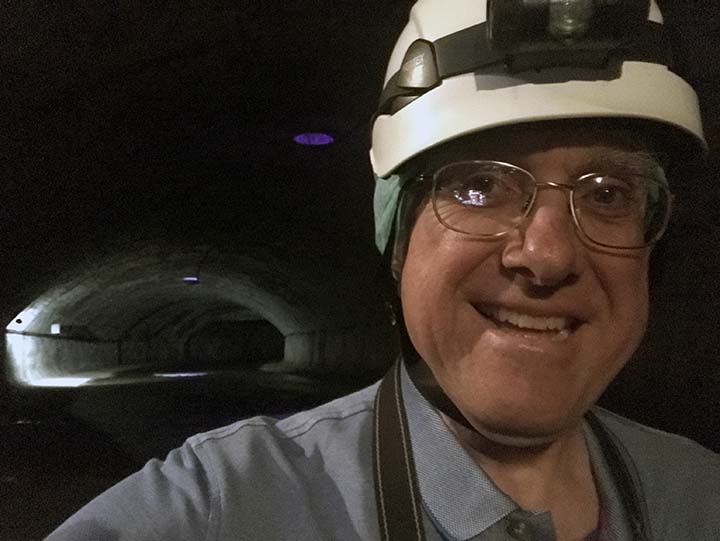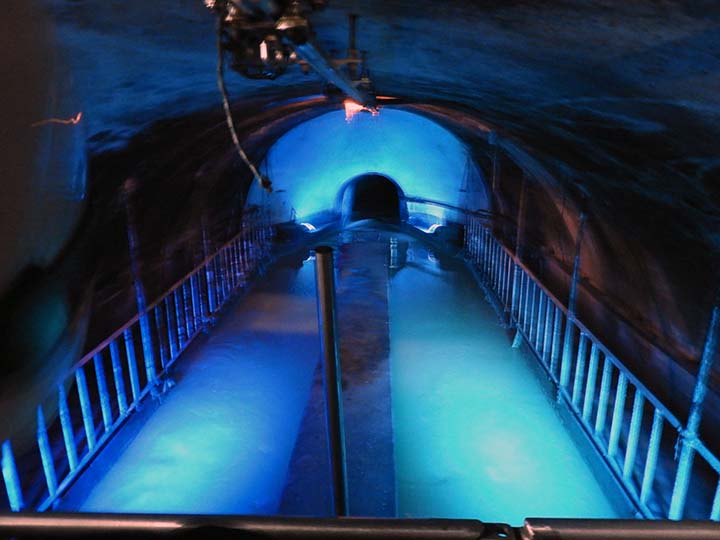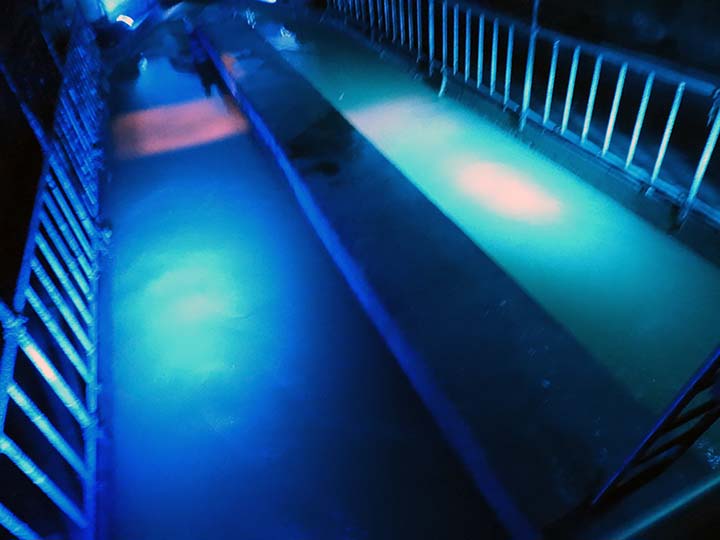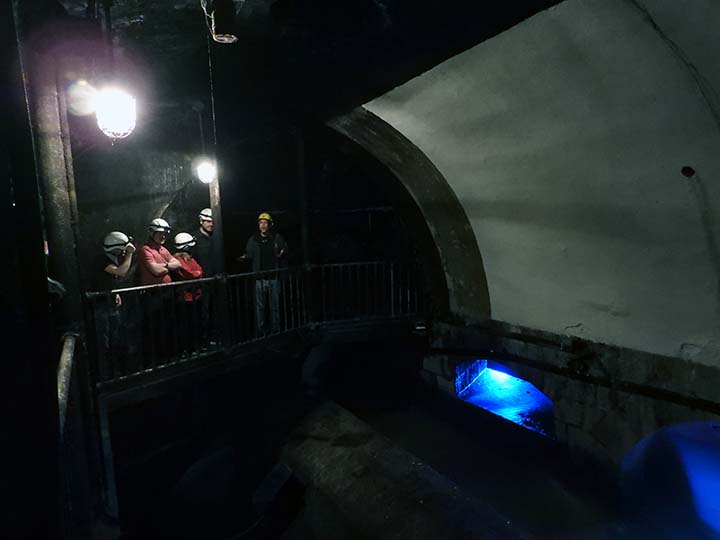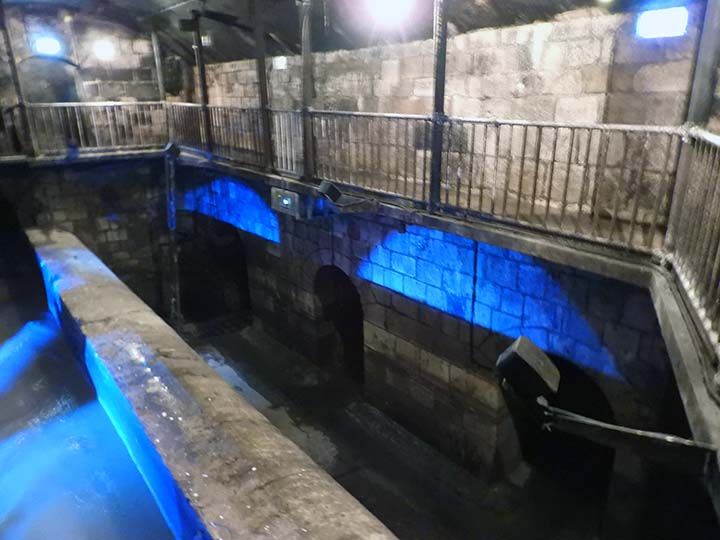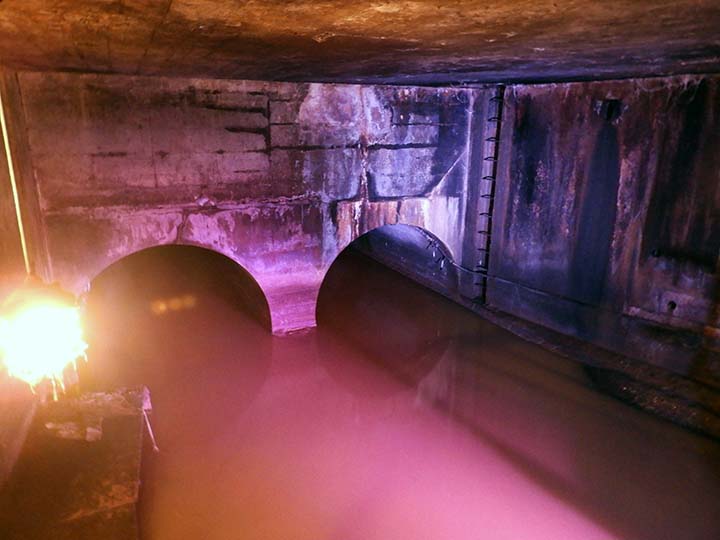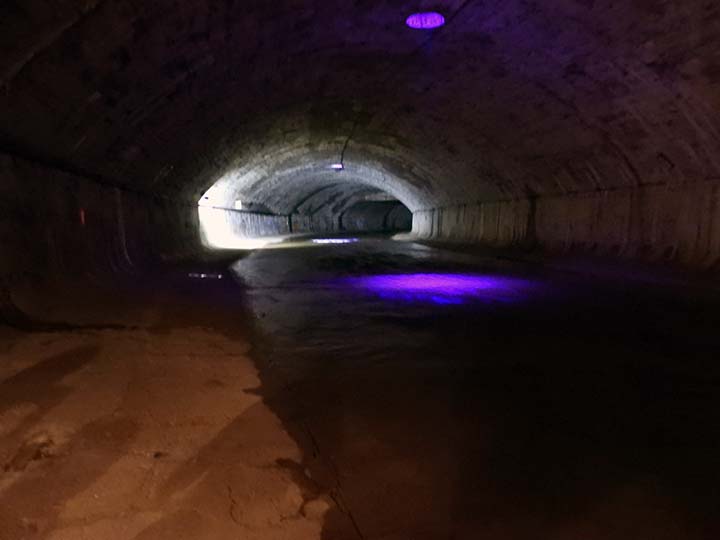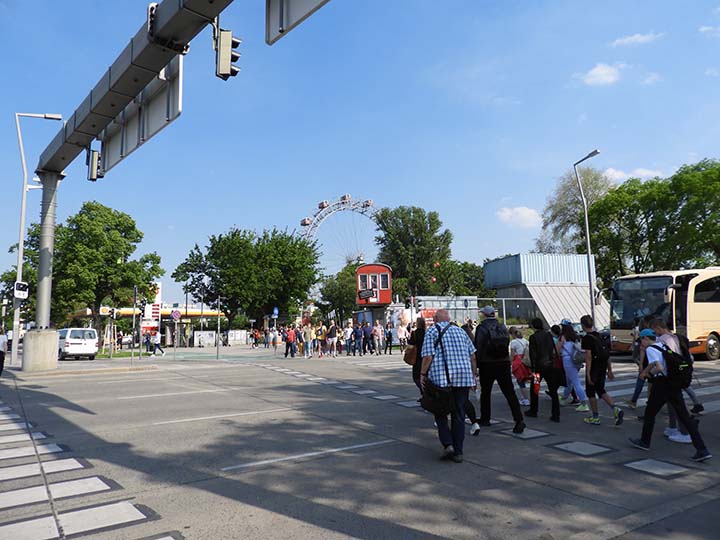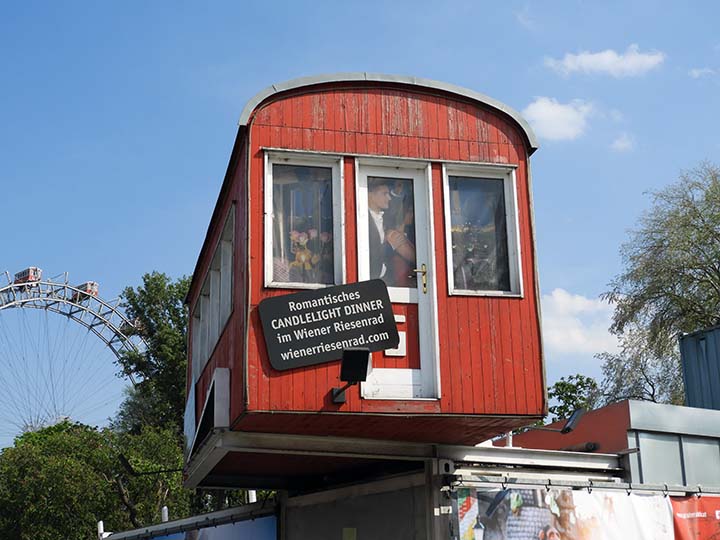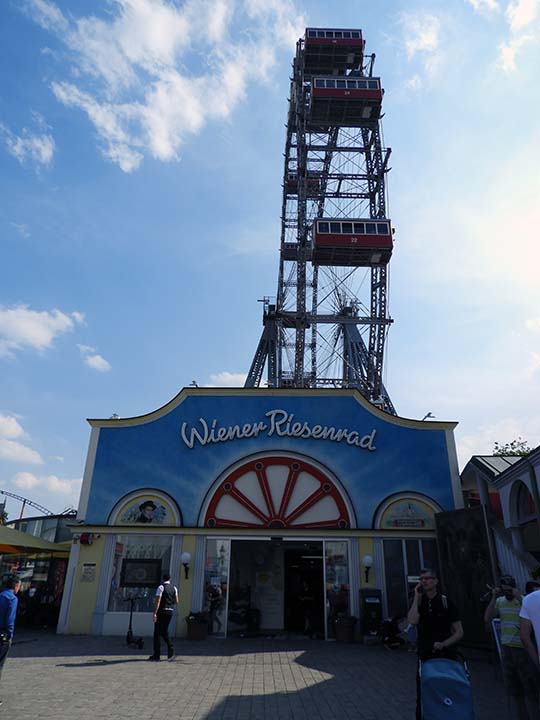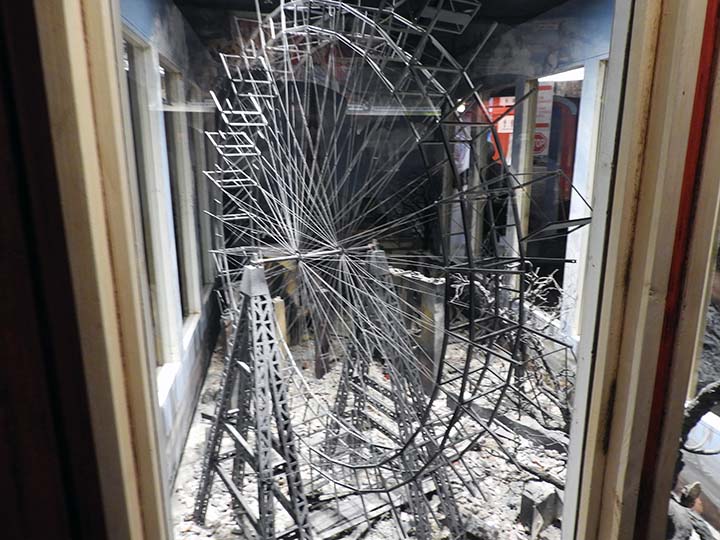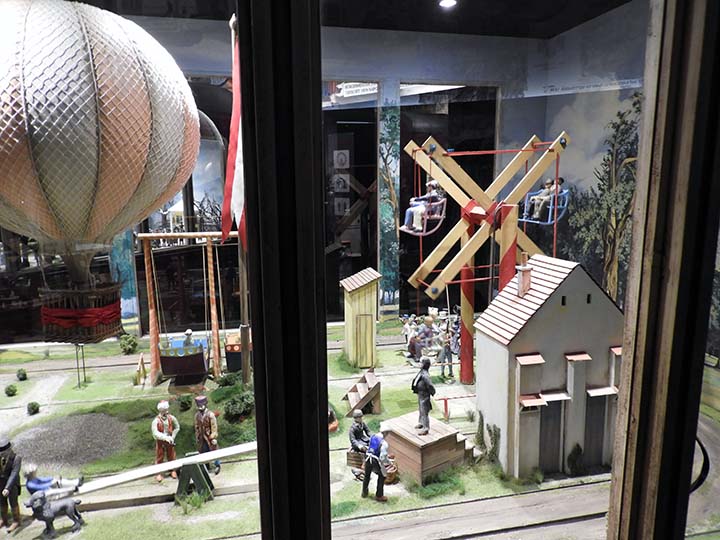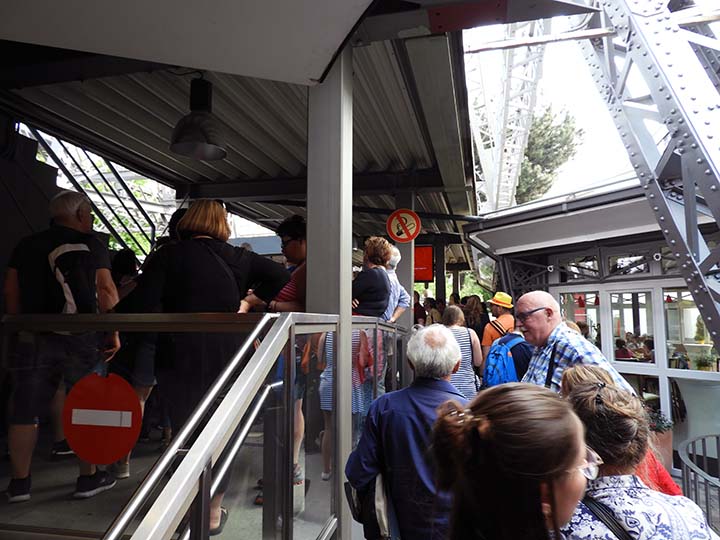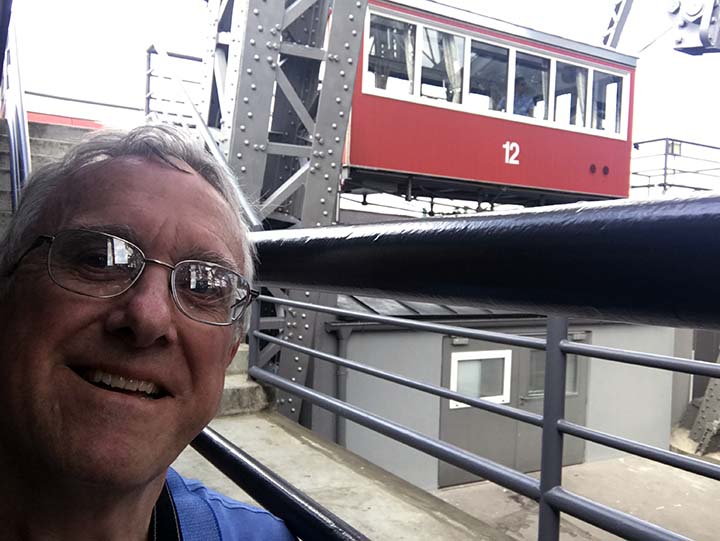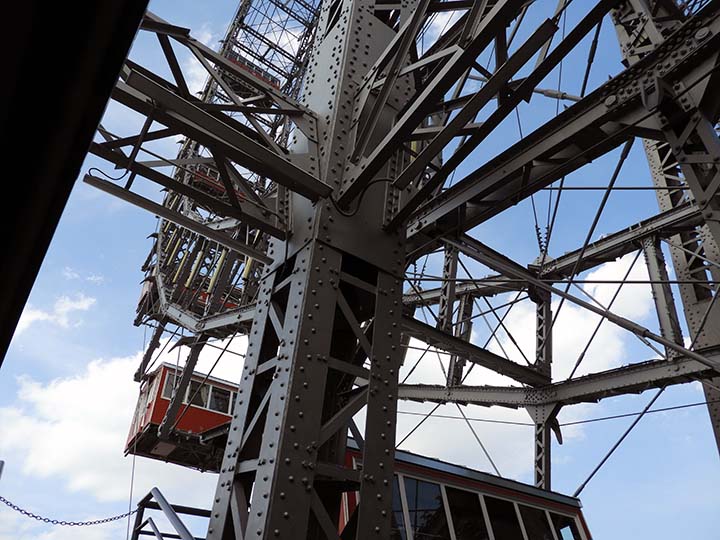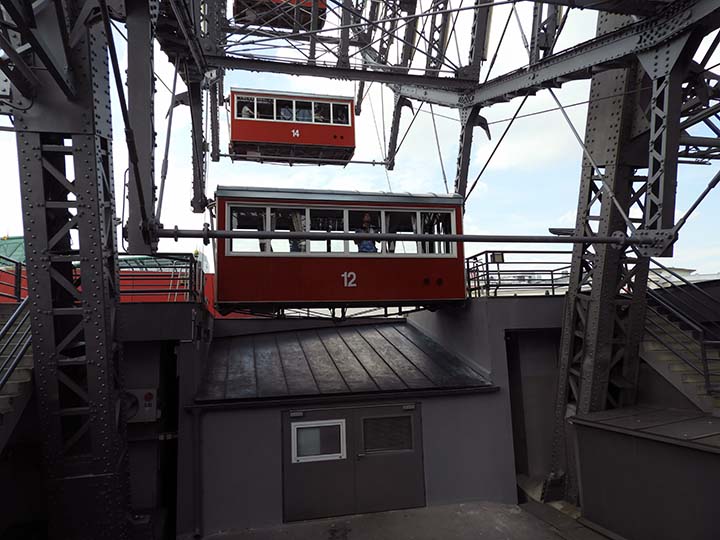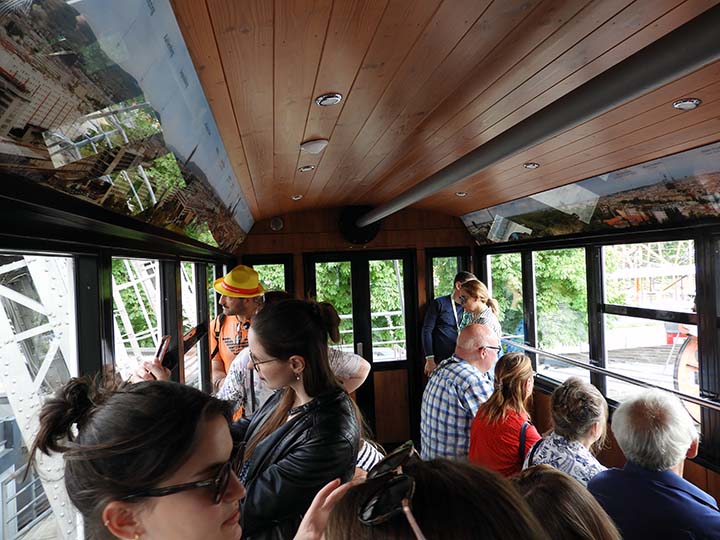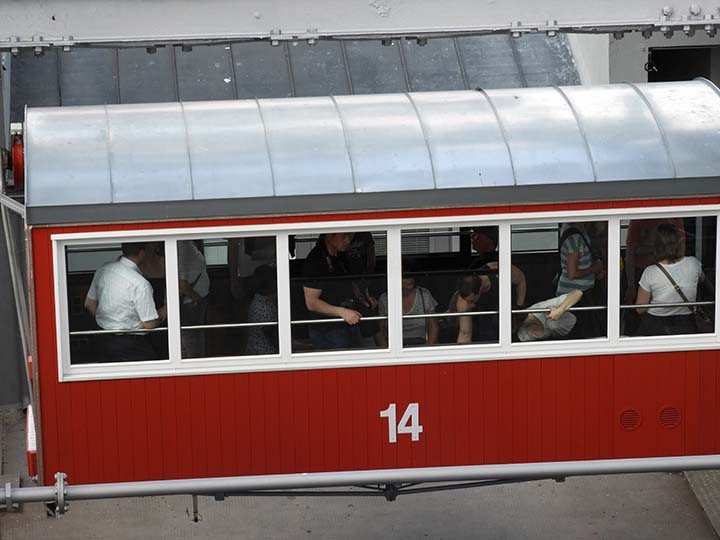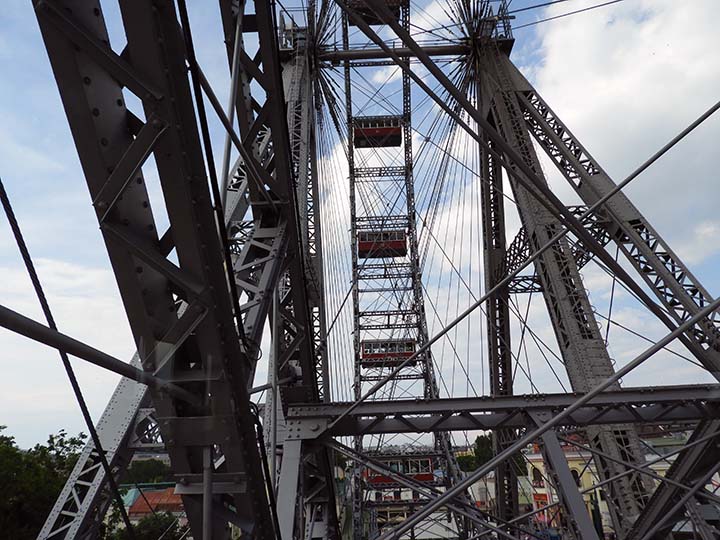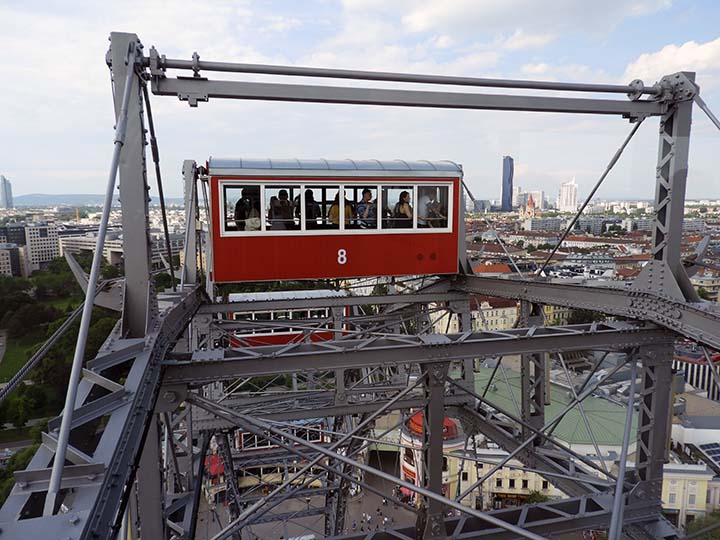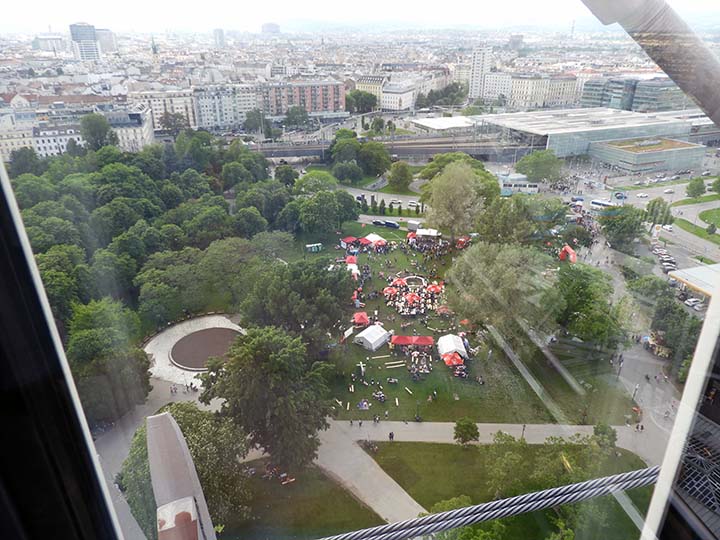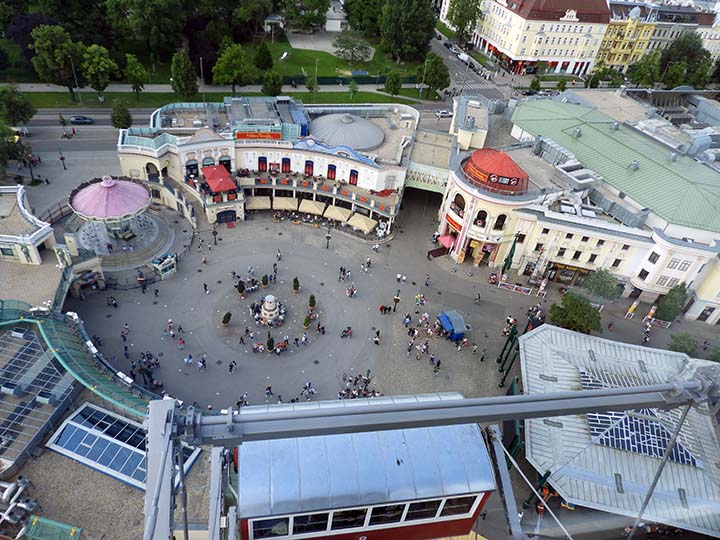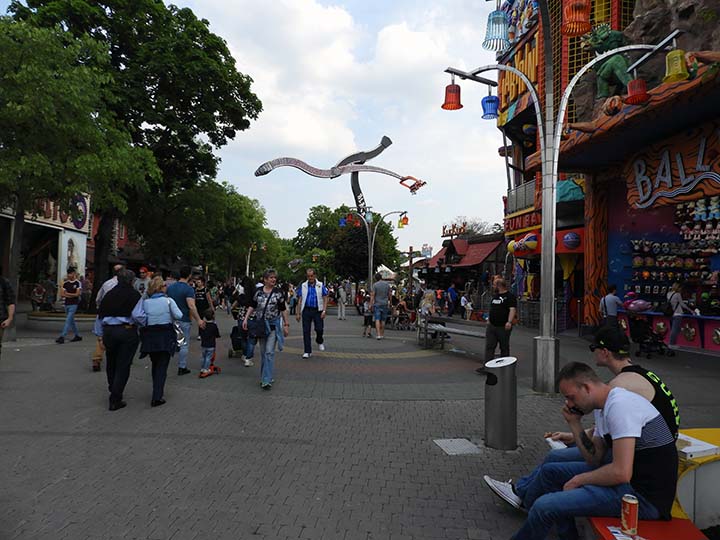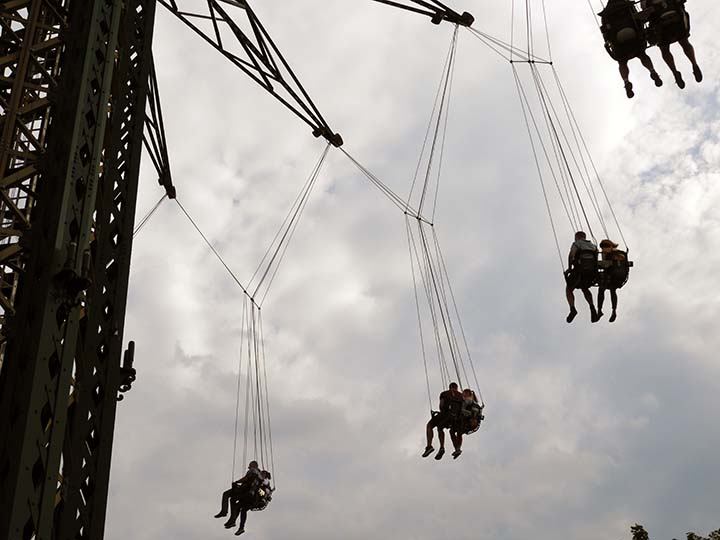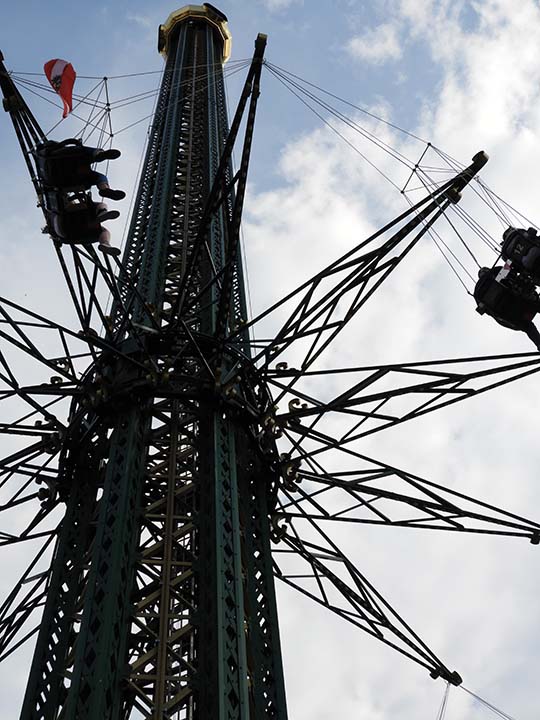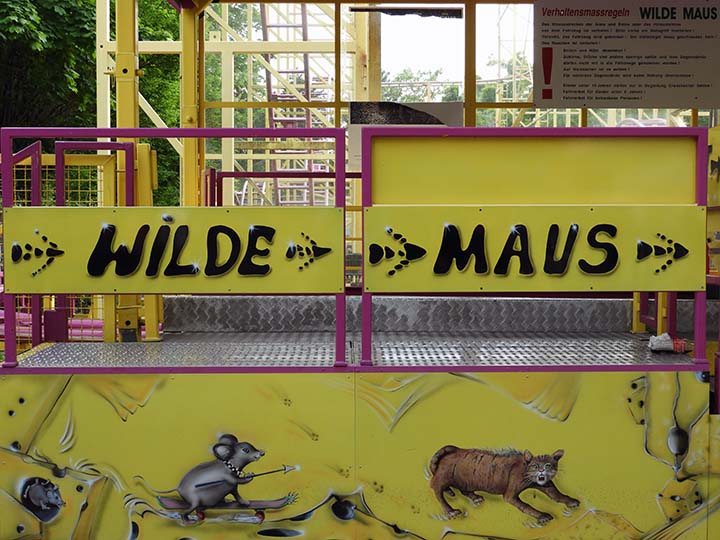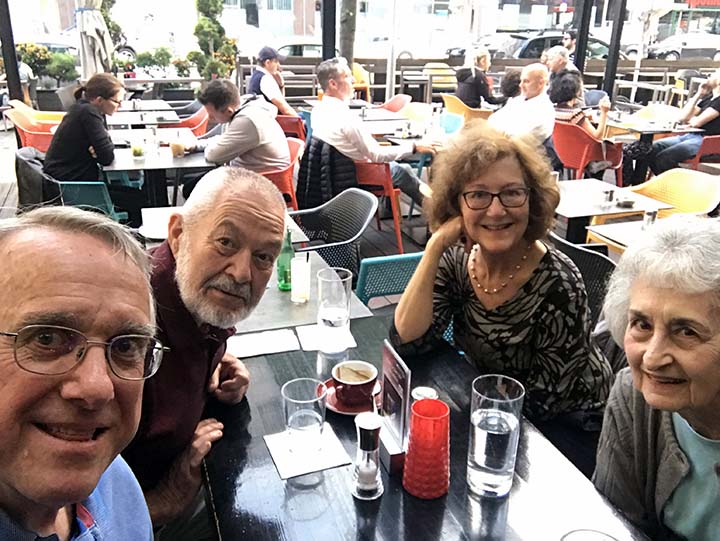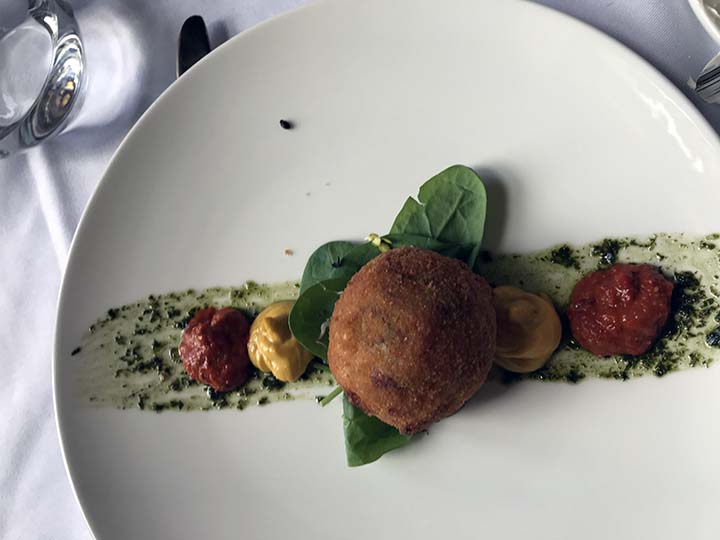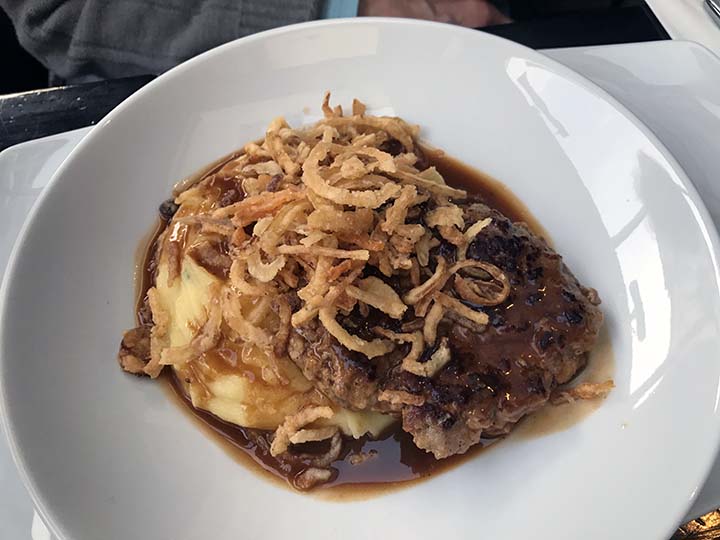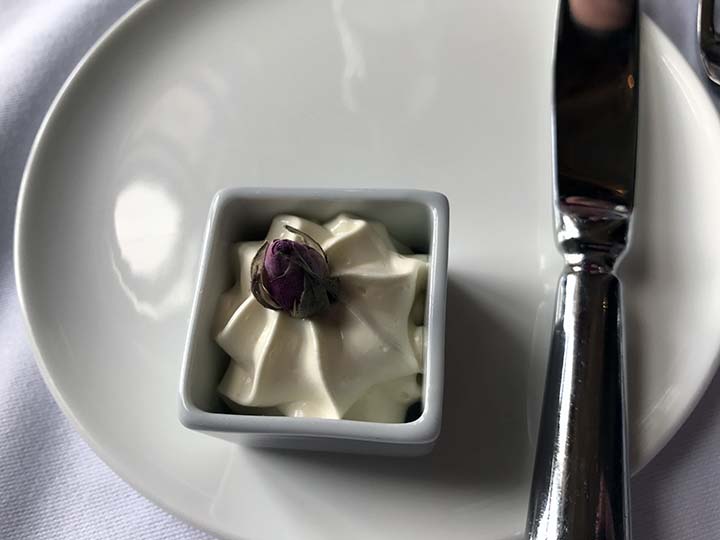|
In contrast to yesterday, today we had free time in the afternoon and I was able to do a couple of things Iíve always wanted to do in Vienna. Like go down to the sewers. Yes, really.
This morningís lecture was by an art history expert who introduced us to some of the treasures we would see later in the day at the Kunsthistorischen Museum where the treasures of the Habsburgs are on display. This is Lisa Zeiler, the art history expert who will take us on a tour of the museum later today. She showing us a gold salt cellar that is part of the Habsburg collection of treasures. She was an outstanding guide, and very knowledgeable. These lectures are really good.
She's keeping us focused on culture.
But Bill sees Abbey Road in Vienna.
And he keeps getting distracted by all the wonderful food on display.
Let's grab a subway.
A real subway, not a sandwich.
We're going to find culture this morning.
Letís go see some pretty stuff. This will be almost as good as Antiques Roadshow.
This looks promising.
Maria-Theresien-Platz is a large public square in Vienna, Austria, that joins the RingstraŖe with the Museumsquartier, a museum of modern arts located in the former Imperial Stables. Facing each other from the sides of the square are two near identical buildings, the Naturhistorisches Museum (Natural History Museum) and the Kunsthistorisches Museum (Art History Museum). The buildings are near identical, except for the statuary on their faÁades. The Naturhistorisches' faÁade has statues depicting personifications of Africa, Asia, Europe, and the Americas. The Kunsthistorisches faÁade features famous European artists, such as the Dutch Bruegel, among others.
The Kunsthistorisches Museum (lit. "Museum of Art History", also often referred to as the "Museum of Fine Arts") is an art museum in Vienna, Austria. Housed in its festive palatial building on RingstraŖe, it is crowned with an octagonal dome. The term Kunsthistorisches Museum applies to both the institution and the main building. It is the largest art museum in the country.
It was opened around 1891 at the same time as the Natural History Museum, Vienna, by Emperor Franz Joseph I of Austria-Hungary. The two museums have similar exteriors and face each other across Maria-Theresien-Platz. Both buildings were built between 1871 and 1891 according to plans drawn up by Gottfried Semper and Karl Freiherr von Hasenauer.
Nothing wrong with having a little fun when you're surrounded by culture.
Bronze Statue of Baron Ernst Gideon von Laudon on his Horse at the Maria Theresa Monument in Vienna Austria. Yep, that's him all right. Whoever he was. P.S. It has recently been pointed out to me that the link above mentions the curse, "Fix Laudon," which apparently was first uttered by Maria Theresa herself. I had no idea about all this when I snapped the picture simply because I thought whoever that was looked mighty impressive up there on his horse. Now I've learned more about the guy than I ever expected to know. And to keep it simple, here's a translation of what you'd learn if you followed the link: FIX LAUDON ďFix LaudonĒ is an Austrian curse word , which is formed from crucifix and the Austrian general Ernst Gideon of Laudon (1717-1790). It is used like "Damn!" And also "Fix!" Or "Fix no amal!" For a short time. "Fix Laudon!" is widely used in Austria and can also be found in literary works such as Master Jakob and his Children (Adam MŁller-Guttenbrunn ). The exclamation is also known in Czech. The first use of the exclamation is attributed to Maria Theresa , who is said to have reacted in 1740 to the attack of the Prussian King Frederick II on Silesia . See? Stick with me and you'll learn all sorts of fascinating stuff.
Maria Teresa, you were a magnificent monarch. Now let's see...which of your museums shall we visit?
Art. We choose art.
Walk this way.
There's lots of cavorting in this museum.
If you're a Habsburg and you have all the money and power anybody could ever accumulate, what sort of trinkets would amuse you? This stuff, apparently.
Our guide keeps us moving through the treasures.
There's another nice one. I'm developing a Habsburg's appreciation for nice trinkets.
They had all the money and the power, but they weren't pretty.
Wonder what's up here?
Do the Road Scholars appear to have seen quite enough Habsburg culture for one day? Nah, that's how they look when they're eagerly anticipating a look at another Habsburg treasure.
You want fine art? How about a Rembrandt?
Bill draws the line at this modern stuff. Bleh.
Religious art? OK, but c'mon...
And...sure. Why not?
Have you ever eaten in a cafe this magnificent?
Me neither.
It does have a nice view.
The Third Man trailer. Not that kind of trailer, a real trailer.
I've seen Harry Lime rip up those triangular gates and climb down that hole. Yes, I have.
But today I'm watching a bunch of German tourists climb out of that hole.
How do I look?
They're projecting video onto the sewer walls!
Don't fall in.
See that white space on the right? That's where they'll project video.
It was damp down there, and the smell ... wasnít awful. But what is really in the water? Our guide was not shy about using the S word.
Straight out of the movie. Remember that stream our guide Lucas was telling us about? The one where the workers almost drowned when the water rose suddenly? This is part of that stream. According to our guide, water can rise swiftly almost to the top of the ceiling.
The projected scenes from THE THIRD MAN onto the wall of a sewer. Pretty neat. If you've never seen the movie, you really ought to have a look. One of the top movies of all time.
Enough of the underground stuff. Let's take the subway out to Prater Park, Viennaís famous and historic old amusement area where we can enjoy reliving one of the other classic scenes from THE THIRD MAN, a ride on the Wiener Riesenrad.
It's a Ferris wheel.
And the gondolas look like that.
I am pumped.
Oh boy, Iíve wanted to do this ever since I first saw the movie.
OK, let's go inside and get a ticket.
There are displays of what the Riesenrad looked like at various times of its existence. It was kinda skeletal right after WWII.
But it was a fairyland at other times.
This is gonna be so good.
Here comes our car.
Bill's ready.
Here we go.
Harry Lime would love this.
Itís a little more crowded than it was that time Joseph Cotten rode with Orson Welles.
Bill doesn't care.
We're being chased by another car.
It hasnít changed much at all since the early 50s when the movie was filmed.
You've heard of "over the top?"
The park is sponsoring a special event for families. There they are down there.
Would you feel any pity if one of those dots stopped moving
forever? If I offered you £20,000 for every dot that stopped - would
you really, old man, tell me to keep my money? Or would you
calculate how many dots you could afford to spare? Free of income
tax, old man......free of income tax. Remember what the fellow said...in Italy, for thirty years under the Borgias, they had warfare, terror, murder, bloodshed, but they produced Michelangelo Ė Leonardo Da Vinci, and the Renaissance...In Switzerland, they had brotherly love. They had five hundred years of democracy and peace, and what did that produce?...The cuckoo clock.
So, you want to see the scene? Here you go.
Can you hear the zither music?
Classic midway.
This place was terrific, a throwback to the Memphis Fairgrounds Amusement Park of my childhood. I loved it.
Of course I rode this.
Wouldn't have missed it for anything.
But I didn't ride the Wilde Maus. Never have much liked the Wilde Maus.
Some of us got together for dinner just up the street from the hotel.
The food was fantastic.
We tried a little of lots of local specialties.
Weiner schnitzel, anyone? And did you know that "Wien" is the way the natives spell Vienna? So a Wiener schnitzel is a Vienna schnitzel. How about that? And I guess a Vienna sausage is really a Wiener. Of course.
A fine ending for a delightful day.
|

